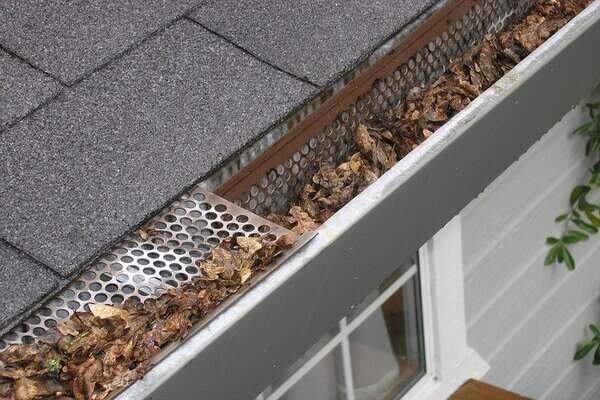Looking to make a do it yourself gutter guards to drain the rain water? Cleaning your gutters will suddenly become a thing of the past for you. And the best part is that you won’t have to spend a lot like you do when it comes to buying those gutter guards from the market.
Most of the gutter guards are of plastic and not resistant to weather changes. The guards we will learn to make here are not of plastic. They are relatively sturdy to handle different weather conditions.
So, let’s begin with the process of making our do it yourself gutter guard!
How to Build a Do it yourself Gutter Guards – Step by Step
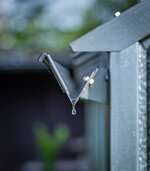
Thinking about what items do you need for this project? There is not much that you will need to complete this entire operation, which is another plus about it. You will need:
- Wire mesh roll.
- A box of nails.
- A box of screws.
- Washers.
- An optional outdoor paint.
The Process
Removing old gutter spikes

Before you begin with the installation or building process, you need to make sure to get rid of the old gutter spikes. You will need to use a hammer for that and brace yourself but work on a single spike at a time. Install a new threaded spike with the schlep of a drill. Continue installing all the spikes until you are done.
Cutting the mesh
You need to begin by cutting your wire mesh roll, ensuring the cuts are wide and covering the gutter. You need to leave enough room to screw them down as well. At this stage, you can go with the optional outdoor paint to coat the mesh to make it weather-proof. If you don’t want to paint it, that’s fine too.
Clean and reinforce your gutter

This is the right opportunity to properly clean and reinforce your gutter with the help of an outdoor sealant. The sealant can be used either at the end as well, but using it here will allow you to stick the mesh properly and screw it in as well.
Ensure not to end up damaging your gutter by propping up an extension ladder against it. Articulated ladders will work better in this scenario because they transfer all the force to the roof. However, you can use an extension ladder on the side of the roof and not on the gutter itself. Now, begin your cleaning process using a bucket and a scoop.
Attaching the mesh to the gutter
The next step is simple, and you need to attach the mesh to your gutter. Begin by sliding a side of the mesh wire right under the shingles if you install it on the roof. If that is not the case, use a washer and nail the mesh to the outer edges of the hole.
You need to attach the mesh to the side or top of the gutter and then use your drill or screwdriver to fix it. This will make your mesh firmly attached and cover the top of your do it yourself gutter guard.
Types of Gutter Guards
Might you think there is only one type of gutter guard available? However, there are three different types of guards. And in this section, we will elaborate on each of them in detail.
The three main types are screens, meshes, and reverse curves called surface tension gutter guards. Each of them is suitable for different scenarios. Most of the guards are available in lengths ranging from 3-feet to 8-feet and with widths to cover the gutters that range from 4 inches to 6 inches.
Screens Gutter Guards
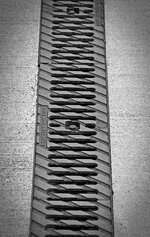
These guards for gutters come with plastic or wire grids that you can install when you lift the bottom row if your shingles are on the roof. After that, you need to slide the edge of these guards right beneath.
It means the weight of your roof shingles will hole these gutter guards in place. This gutter guard is the easiest to install, and in most cases, you won’t need any tools.
Benefits
- This gutter guard keeps the leaves from entering into the trough of the gutter.
- It is also an inexpensive option with easy installation and won’t cost you much time or money.
Considerations
- As you haven’t screwed this gutter guard down, it might get dislodged due to high winds. Even falling branches can knock them out of the shingles.
- With time, the plastic screen guards will become brittle and tend to break.
- When you pry the lower row of shingles on your roof, you might void the warranty for your roof. Therefore, you should contact the shingle manufacturers before installing it on your screen gutter guard to avoid any inconvenience.
Meshes Gutter Guards
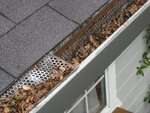
These gutter guards are very similar to screens and allow water to go right through the small holes. This guard holds the debris and twigs back. You can find meshes in metal and plastic, and you can install them in three different ways.
You can similarly install them as you install the screens under the first row of shingles on your roof. Moreover, you can fix them by snapping the guard directly on the gutter. Furthermore, they can be fitted by attaching flanges to your fascia.
Benefits
- There are multiple ways of installing them, and all of them are pretty simple.
- They are available in different varieties, and you can either go for stainless steel or plastic based on your budget and the quality you are seeking.
- It can block smaller debris such as sand but allows rain to flow through.
Considerations
- Low-quality varieties are almost worthless to use and a waste of money.
- You might need to clean and maintain these guards occasionally by spraying the hose and scrubbing it with a brush.
Reverse Curves Gutter Guards
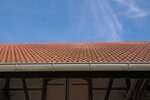
These guards are made using molded plastic or lightweight metal. Water cannot flow right through them. But they keep the flow in a downward curve before it all drops into the gutter beneath.
Here the debris and leaves slide off and fall on the ground. To make this system work properly, you need to install guard strips at the same angle as that of the roof’s slope.
Benefits
- It does an excellent job of keeping the leaves and debris separate from the water.
- There are different color options available as well.
Considerations
- This type of gutter guard is not very do-it-yourself-friendly. You need to attach the guard to the backside with a precise angle according to the roof’s fascia. If this angle is not correct, all the water will flow right over the edge and not into the gutter. Therefore, there are some advanced carpentering skills involved here. At times you might have to lower the gutter itself as well.
- These guards go right above the existing gutter, so you might be able to see them from the ground.
- These guards are pretty durable, but they are expensive, especially if you compare them with meshes and screens.
How to Measure Gutter Guards?
You must take accurate measurements to avoid ad wastage. And for this, you need to go for the right size of the guard. Measuring the width from the top of your gutter from the outside edge and then to the outer edge.
These gutters come in three different widths. These include 6-inch, 5-inch, and 4-inch, where 5-inch gutters are the most common ones. Just make sure you measure the dimensions correctly to get the right size and avoid wastage.
How to Remove Gutter Guards

Are you thinking about removing the old gutter system? These gutter guards become slow to work when there are too much debris, dirt, and twigs clogging them up. Moreover, dirt can easily infiltrate any gutter system. Therefore, the time will come when you need to remove your old gutter protection system and install the new one.
To begin with, make sure that the ladder you are using to climb up on your gutter is stable. You will need a screwdriver or drill and a garden hose with some drop cloths. No matter what type of gutter guard you have installed, you need to examine the guards and see where the screws are.
Check whether they are snapped into place or not. Carefully unscrew or unsnap the guard and then clean the debris using the hose and drop cloths. Just make sure not to end up bending the guard.
If you are going to install new guards, you don’t need to be very careful in handling the older ones. If you are not sure about it for some reason, you can always ask for professional help in this regard.
How to Clean Gutter Guards?

What if you need to clean your gutter guards? Well, that is a simple process too. Again, you will need a drop cloth, a ladder, some hand protection, and a hose for this entire operation.
Place your drop cloth right under the area where you will be working to catch all the debris. If you are looking to clean it later on, you might not need the cloth and allow the debris to fall on the ground. But it’s a real-time-saver whether you want to clean your lawn or not.
Now secure your ladder on the wall. Use some hand protection like gloves and start climbing the ladder. You can easily clean in detail and won’t end up stabbing anything in your hands. Now, remove the materials and debris that is around the guards and on it.
In the end, remove the guard itself and hose everything down to make sure no particle remains on your guard. This is when you need to go for the replacement if you want to install the new guard. Otherwise, put the old guard back in, and your entire system is clean.
FAQ
Do gutter guards work in heavy rain?
These gutter guards are not designed to handle heavy rain, so they will fail during a heavy downpour. These guards are better suited for slow and steady rainfall.
Is it normal for gutters to overflow in heavy rain?
Not many downpours will make a do it yourself gutter guard overflow during rain. Based on the area of the roof surfaces and how much rain gets drained, a larger gutter will stay in place and continue to work well. A smaller gutter will overflow.
Should I remove gutter guards in winter?
Any gutter guard that is made of metal has the potential to freeze during summers. In the case of a frozen gutter guard, you will experience those icicles as well as water melting right over the guard. Once it all unfreezes, the water flow will open up and start flowing back into the gutter. So, it is safe to say you can remove your gutter guards in winter.
Do gutter guards prevent ice dams?
Like we have just mentioned, icicles begin to occur as the water flows right over them. It means your do it yourself gutter guard is not going to prevent ice damming.
Should gutter guards go under shingles?
You can put your gutter guard under the first row of shingles, but it will also void the roof warranty. It will break your roof’s water barrier and result in water damage in the long run. So, it would be better to avoid such gutter guards.
Conclusion
So, what do you think about this, do it yourself gutter guard? They do work pretty well, but they also have their limitations. For instance, they are useless in heavy downpours and won’t work in snowy winters.
But they are efficient in every other way, and you will end up saving a lot if you go for a do it yourself project. Just make sure to clean them properly and replace them quickly to get the best out of these valuable guards.

